Transposition is an important part of music as it allows for different instruments to play together in perfect harmony! This article explains how to transpose treble to bass clef in three different ways. Not only is this incredibly useful if you are writing music for a group of musicians, but it will skyrocket your understanding of clefs.
The Treble and Bass Clef
Here’s a lightning quick recap of the relationship between the treble and bass clefs. you can see middle C on the Grand Stave which includes both clefs.

Here you can see how the B below middle C would look in both clefs.

Two ways to Transpose Treble to Bass Clef
There are generally 2 ways that we might want to transpose treble clef to bass clef:
- Transpose treble to bass clef keeping the pitch the same.
- Transpose treble to bass clef – notes are one octave lower in the bass clef
So let’s look at each of these in turn.
1. Transpose with same pitch
As you can see from the image below, the treble clef is generally used for higher registers, with the bass clef for the lower register. The distance between the clefs meaning we cannot just change the clef on the music (from treble to bass) to transpose our music.
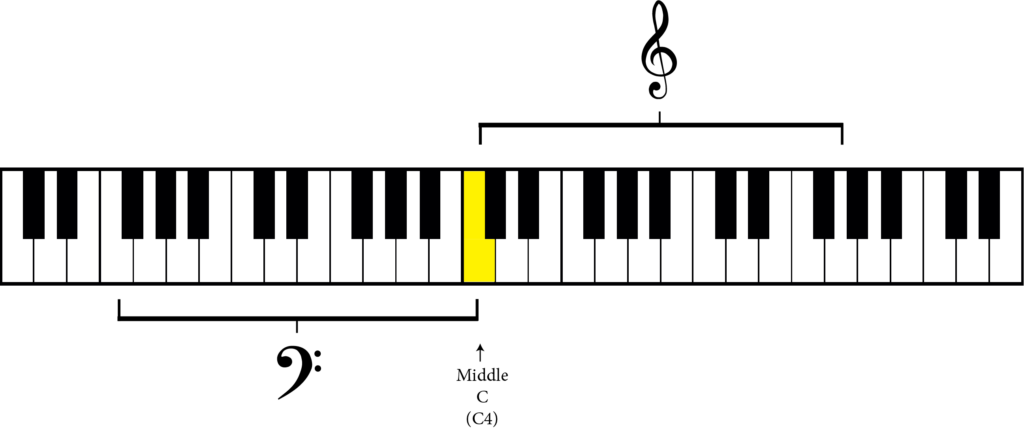
Here is middle C written in both clefs. As you can see they are quite far apart on the staff!
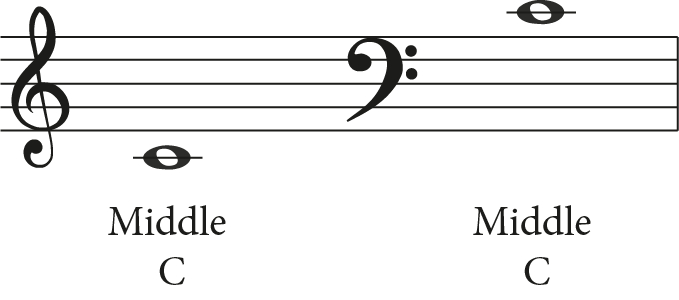
This means we need to think carefully about how to rewrite treble clef notes in the bass clef. Below is a list of notes in the treble clef with their corresponding notes in the bass clef.

Using our understanding how both clefs work, we could look at one note at a time and rewrite it in the bass clef. Here’s an example below.


You might have notice there is a pattern. If the note is on a line, move it up 6 lines. If the note is in a space, move it up 6 spaces. Now you can change the clef and the notes will be perfectly transposed into the bass clef (and will be at the same pitch).
Using our rewriting method we can simple look at each note in turn and transpose it into the bass clef. Have a look at the examples transposition below.
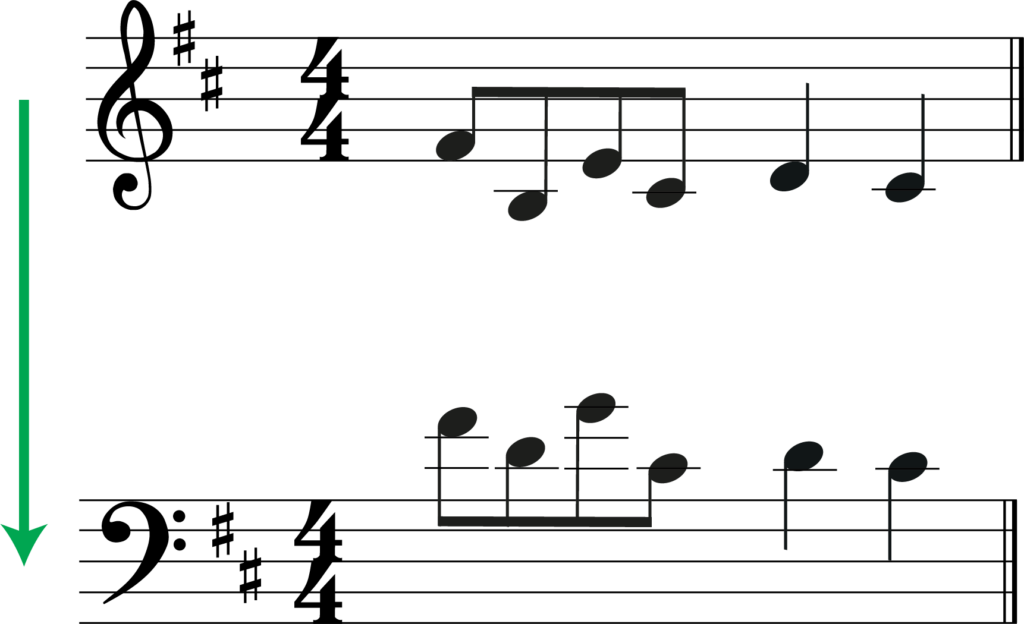
Two things to Remember
- Key signatures – There is a specific position on the staff for sharps and flats in key signatures for each clef. The easier way to get this right is to memorise the patterns in each clef. Below you can see key signatures for shapes and flats for both clefs.
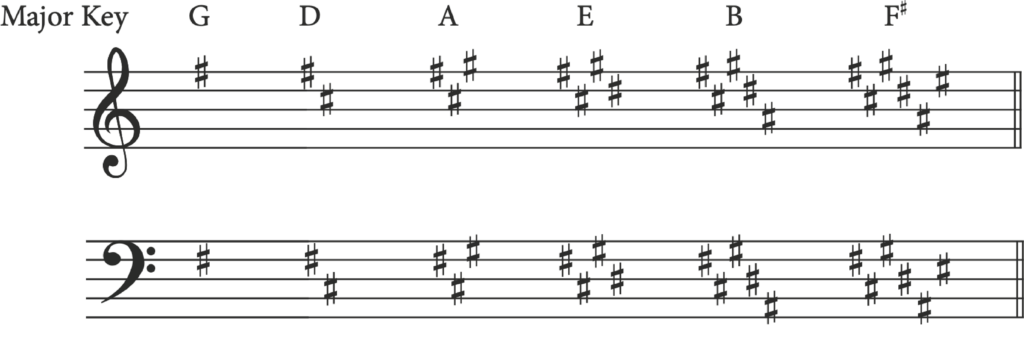

- Stem direction – After transposing the portion of the notes has changed on the staff. This might mean that you need to alter the stem directions. The main rule is that the stem points upwards if the note is below the middle line on the staff, and the downwards if the note is above the middle line. If the note is on the middle line then the stem can point either way and this is usually determined by the direction of notes in the same measure or phrase.
2. Transpose so the Notes are One Octave Lower
As the treble clef is used for notes in a high register it can make sense to transpose to bass clef so the notes are the same, but they are pitched one octave below. This can be useful if you are transposing an instrument in a higher register, such as the guitar, to create a bass line for a bass guitar player.
Look at the example melody below.

Now look at the version below that has been transposed into the bass clef. All of the notes are now one octave lower.
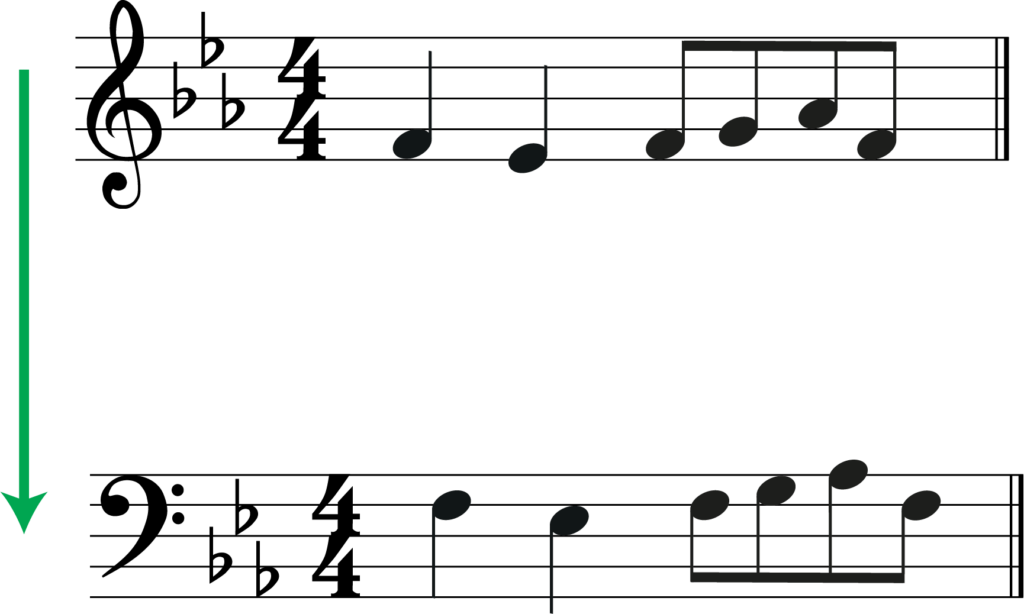
You might notice a pattern between them. The transposed bass clef notes are 5 notes higher (including lines and spaces) than the original treble clef notes. You can use this trick to quickly move notes into the correct position for this type of transposition.
Remember that like with the previous type of transposition, we need to check our key signatures and stem directions.
Bonus – Transpose treble to Bass Clef Two Octaves Lower
A third way to transpose treble to bass clef is to move the notes into the bass clef, but two octaves lower.
To do this I recommend moving the notes down an octave first, then moving them again for a second time. the way you do this will depend on the position of the notes in the treble clef.
Let’s look at two examples. The in the one below, most of the notes are towards the higher end of the treble clef.

With this example I would transpose down an octave and stay in the treble clef. The I would transpose down the 2nd octave and move the notes to the bass clef. The advantage of this approach is that we avoid working with a lot of ledger lines in the bass clef.
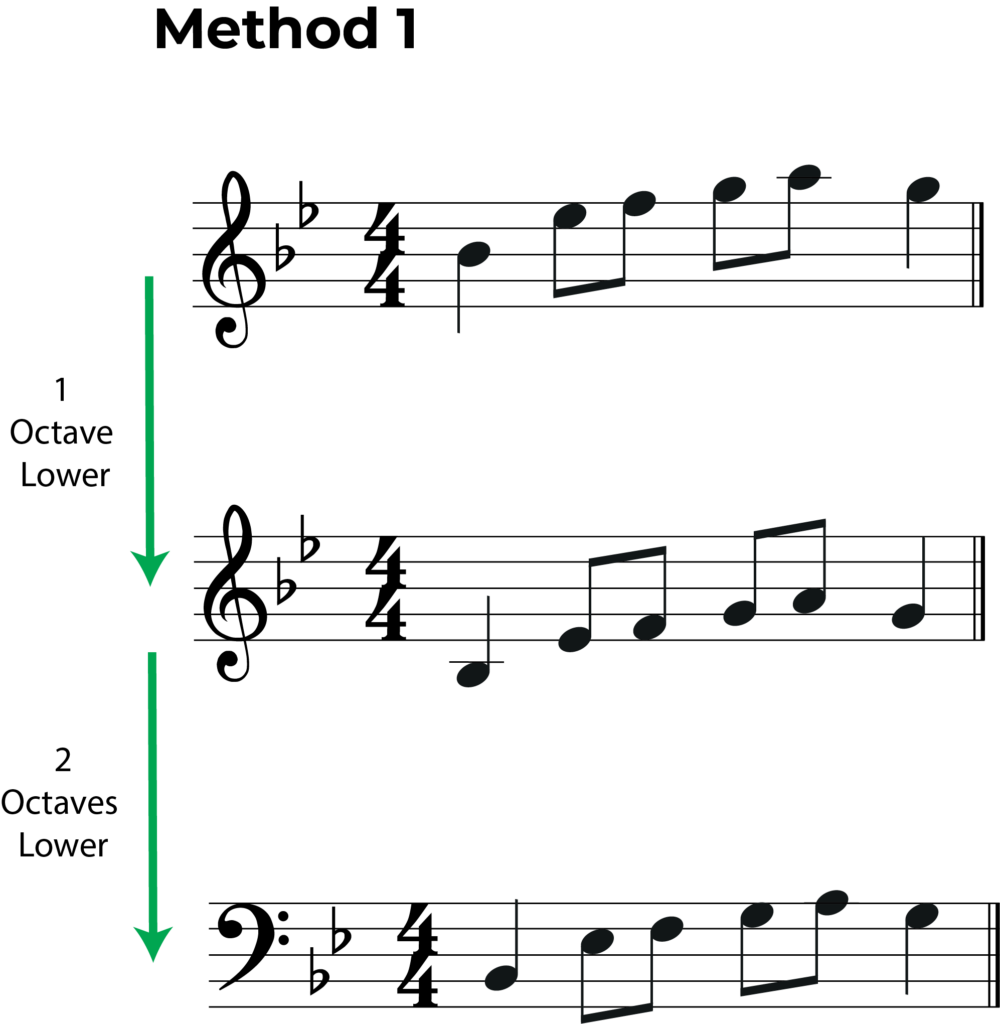
Now let’s look at a final example.

Here we start with notes quite low on the treble clef. In this case, I would transpose down an octave straight into the bass clef. Then we can continue in the bass clef to transpose down the final octave. If we didn’t use this approach, we would need to use a lot of ledger lines in the treble clef after transposing down the first octave.
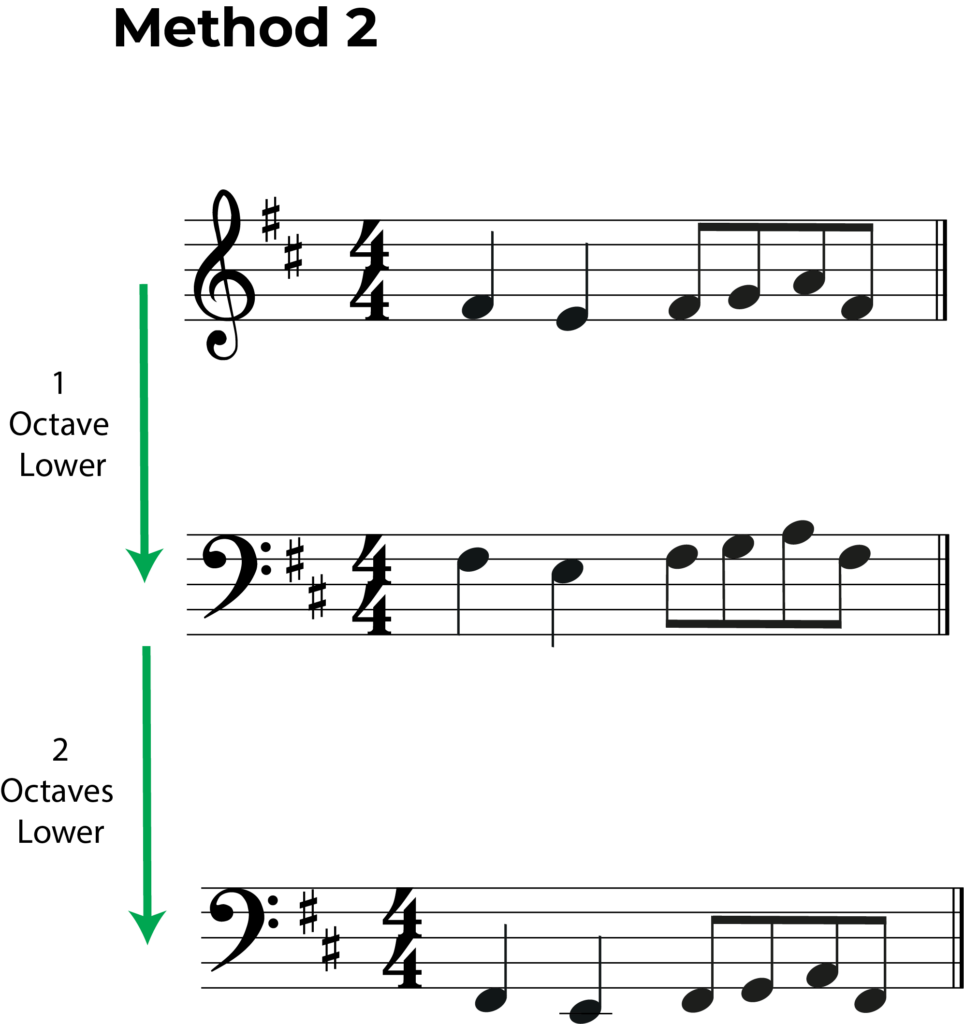
When transposing a distance like two octaves you many have to contend with ledger lines. Check out our guide to ledger lines so you can brush up on your skills.
Using Computer Software
A far quicker method to transpose treble to bass clef is to use software to do it for you! You won’t get the music theory understanding but it’ll definitely save you some time. Apps like Musescore, Sibelius and Finale will transpose whole pieces with the press of a few buttons. You can then export, print and share your new transposed sheet music.
What’s next..?
- Learn to transpose from bass clef to treble clef
- Learn to transpose in the alto clef or tenor clef
